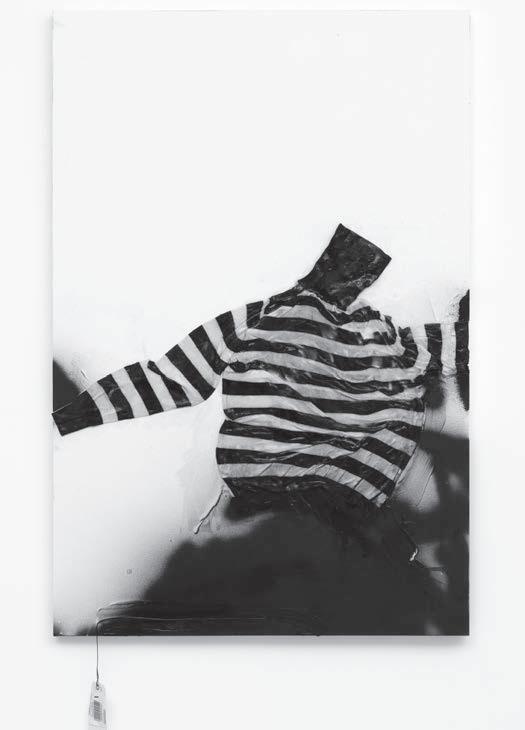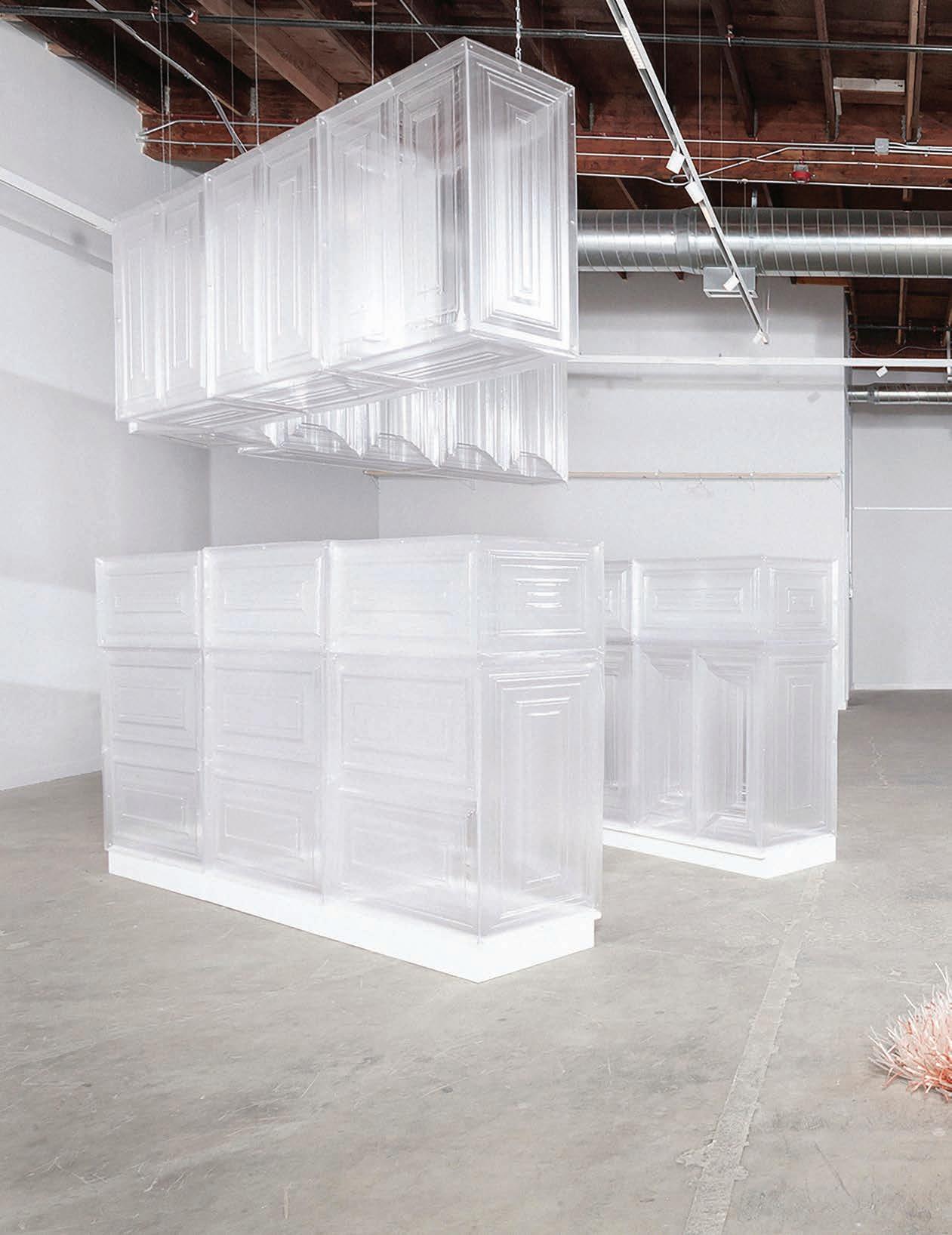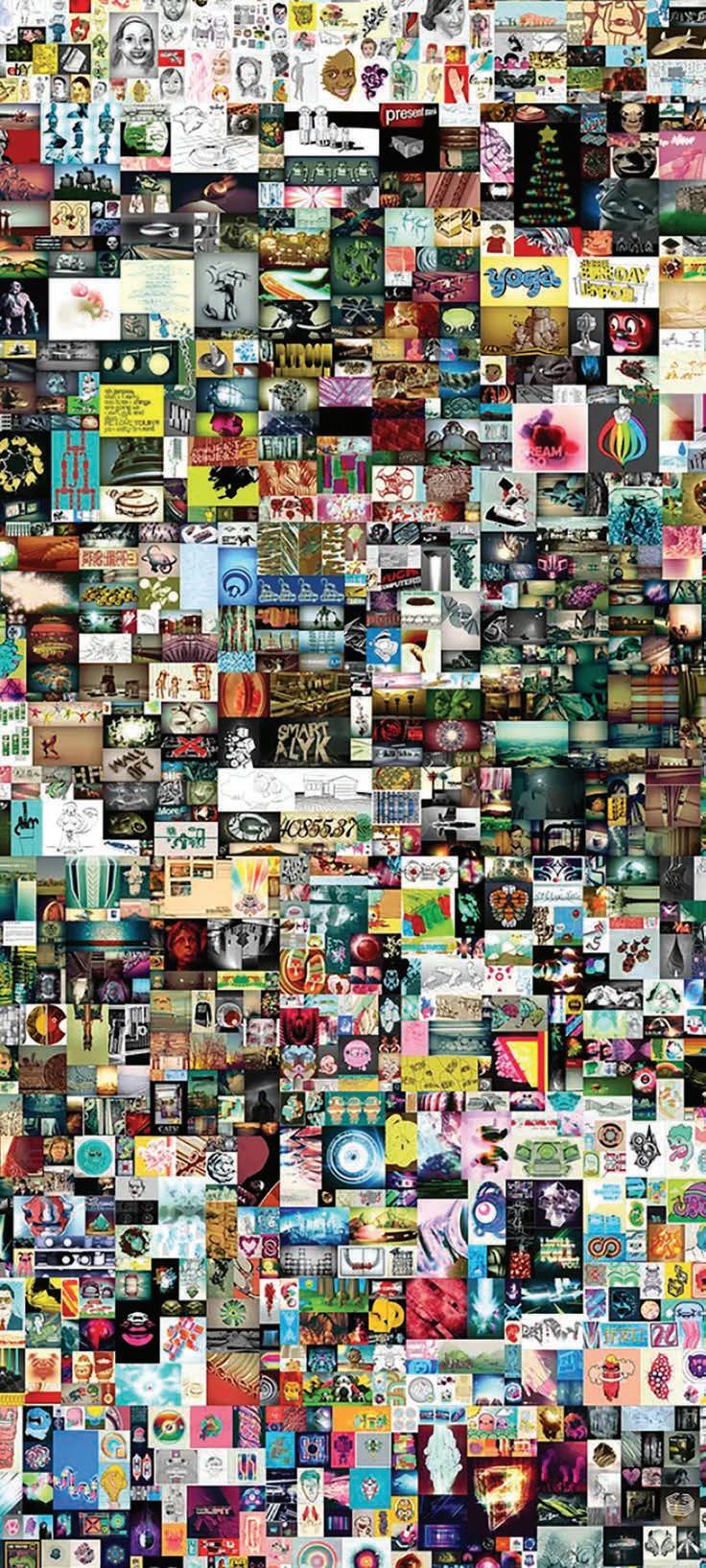R E V I E W S
Johanna Breiding Ochi Projects By Ezrha Jean Black
a story begins to unfold—through Silverman’s attention to detail— about the history of power, erasure, hierarchy and otherness that has been built into the very fabric of culture. Silverman seeks to expose the role of toxic masculinity, racism and colonialism in American culture by observing its various monsters throughout cinema. The body of work is a spectacle of elegant nostalgia that begs the viewer to question the true history, emptiness and destruction of imperialism; all the while, showing that the roads of terror point to a drive for power, a core tenet of toxic masculinity. A beautiful large tapestry, titled Carrefour Pietà / Be My Victim (2021) serves as a spectacular centerpiece where all the other elements within the show rise and converge. It portrays a still from the 1943 classic film, I Walked With A Zombie (directed by Jacques Tourneur), paneled alongside a depiction of Michelangelo’s Pieta; the Virgin Mary holding Jesus. Here, the artist has employed the juxtaposition of light and dark in a symbiotic way; a Black man/zombie/monster carrying a white femme between images of Mother Mary holding Black Jesus. The first room to the right of the main gallery floor is lined with small resin wall reliefs resembling ornate windows that expose rooms, each filled with a different classic horror trope. Michael Jackson’s famous zombie-look from the music video Thriller, is seen in Porthole 1 (Proteus) (2020) and in Porthole 7 (Death and the Maiden) (2021), where Death is a Black figure carrying a white woman. In the main gallery, another tapestry hangs on the wall of the bride of Frankenstein, titled The Monster’s Bride (She’s Alive!) (2020) directly to the right. Three kitschy cookie-cutter dollhouses, titled “Repository I-III” (all 2021) made of isomalt sugar and epoxy resin sit atop illuminated bricks of Himalayan pink salt in the center of the gallery. Glowing resin claws litter the corners of the room in zombie fashion, as if menacingly coming up from below. Turning Heel (2021), Lady With The Ring (2021) and Satan Arousing The Rebel Angels (2021) show the talons outstretched from beds of salt with found objects surrounding them. In some cases it’s a jar, a puffer fish specimen or carpenter bees. The use of light and epoxy resin seems reminiscent of the late Mike Kelley’s body of work—“Kandors” (2005–09) specifically, with its use of low lighting and glowing sculptures—that take iconography from pop culture to transport the viewer into a space of unflinching truth, beauty, memory, sadness and terror.
Johanna Breiding’s show of photography and ceramics at Ochi Projects defied singular characterization in favor of an enveloping tsunami of empathic correspondence—a tidal progression of images both intimate yet nothing less than oceanic. The exhibition’s slightly coy title, “Playing Submarine,” hinted more at Breiding’s narrative strategy, leading the viewer’s eye through brief image sequences that pushed larger perspectives alternately skyward and into a kind of collective unconscious with a pendant moment of self-confrontation. The images were all tightly framed, self-contained, specific. The first, a vacuum hose spiraling out of a deck-side hole and into a pool’s turquoise water, bore the title, Imago (all works 2020 unless otherwise indicated), to which both psychoanalytic and entomological meanings might easily apply. Crown, the second image in this sequence—a bald head emerging from a pool of water, the diffracted lower body visible beneath the surface—completed the “imago.” A glossy glazed black ceramic cat identified only as Vessel 57, provided a potent pause in the procession of photographs (digital C-prints, mostly color, but several in black and white), its open mouth echoing the preceding crowning, while signaling its communication with the installation as a whole. The next sequence sustained these motives of emergence, communication and containment: a deep recession in a snowbank against an alpine landscape in black and white; followed by color images of milk dribbling out of an open mouth; boiling milk bubbling stovetop from a small pot. Following a more chromatically intense visual pause, Breiding seemed to fold her subjects into the frame, including her own tightly locked left elbow and knee (Self-portrait with scars); a communion and confusion of the subjects’ respective fur involving a dog’s harness and a cleanly sectioned thicket of infinitesimally interweaving branches (Crutch). The placement of the largest image, a mylar sheet stretched Johanna Breiding, Vessel 57, 2020, across a shimmering body of water courtesy of Ochi Projects. (Second Skin), was a reversal—a shedding of skin for the aquatic domain, celebrated in the gallery immediately behind it. There, the balance of Breiding’s ceramic “vessels” (including a lobster, a sea turtle, sea snail and horse amongst other creatures or their shells) variously glazed in blues, white and sea-green, were gorgeously arrayed upon a long table. Against the wall, nine ink-and-charcoal drawings of body fragments and organs both human and aquatic, played like shadows of the hollowed vessels on the table. Breiding’s final images tested the limits of legibility while climactically complicating the larger exhibition narrative. Home was a paper construction peaked, folded and creviced into a floating mountain; Cloud 9, a dark curl of cumulus cloud billowing into the sunlight, oculus to a space without limiting definition. The viewer’s gaze was finally met head-on in a small painting of a bobcat hung just off-center to the rear of a bed foregrounding a nude body’s bended knee in Apex, which seemed to sum up the contradictory juxtapositions of legibility and actuality—the ferocity underlying the vulnerability.
59

























